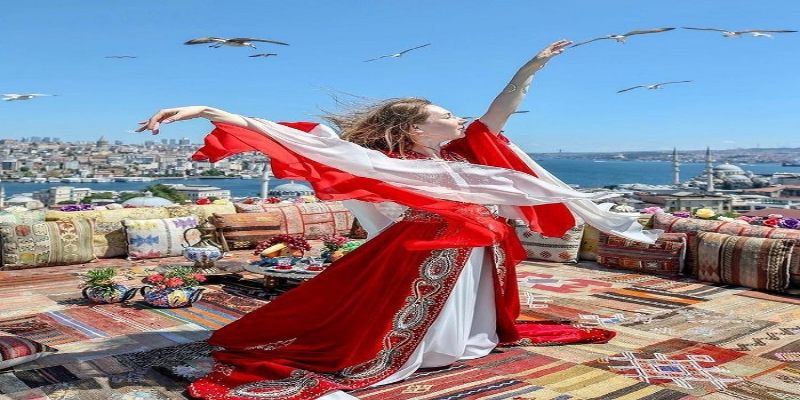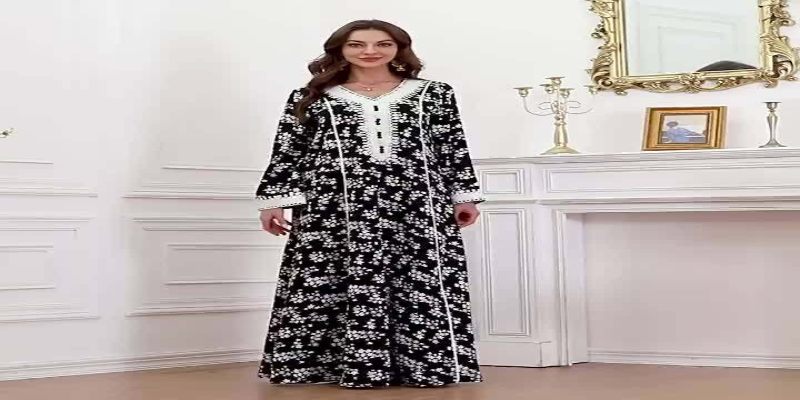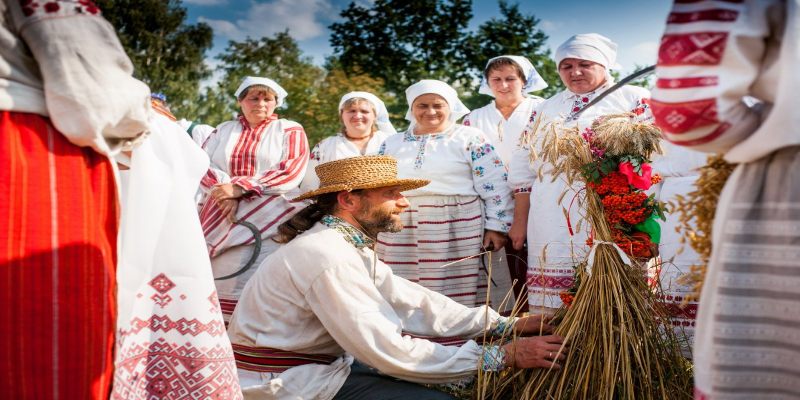Get free consultation
Fill out the form and we will contact you
Turkish clothing represents a harmonious blend of Islamic traditions and influences from both Asian and European cultures, creating a unique and captivating style. From the magnificent kaftans worn at weddings to the everyday attire of the Ottoman people, every detail reflects the cultural depth and thousands of years of history of this country situated between two continents.
Turkish attire is a symbol of the cultural crossroads between East and West, reflecting a rich history from the Ottoman Empire to modern times. According to cultural researchers at Istanbul University, traditional Turkish clothing often uses silk, velvet, and cotton, featuring intricate hand-embroidered patterns such as tulips or Ottoman geometric motifs. Garments like the kaftan (long robe) and şalvar (baggy trousers) were once symbols of the nobility in the 16th–17th centuries.
Turkish clothing as a cultural crossroads between East and West
Today, traditional clothing is still worn during festivals, weddings, or cultural events. For example, the bindallı, a lavishly gold-embroidered dress, is often worn by brides during engagement ceremonies. According to the Turkish Ministry of Culture and Tourism, over 60% of cultural festivals in Istanbul and Ankara in 2024 will feature traditional clothing, attracting millions of international visitors.
The kaftan is one of the most famous pieces of Turkish clothing, historically worn by both men and women. It is a long robe, usually made of silk or velvet, with wide sleeves and intricate embroidery.
According to the Topkapi Museum, kaftans were once symbols of power for the Ottoman sultans. Today, designers like Rifat Özbek have modernized the kaftan, showcasing it at Istanbul Fashion Week 2024.
Yemeni, lace-embroidered headscarves, are indispensable accessories for traditional Turkish women. Each region has its own style, such as rose-embroidered yemeni in Antalya or sequin-adorned yemeni in Cappadocia. According to a 2024 survey at the Grand Bazaar, yemeni are the most purchased handicraft items by tourists, accounting for 35% of total artisan sales..
The most famous Turkish clothing is the kaftan
Şalvar, loose-fitting trousers, were historically popular attire for both men and women in Turkey. Made from cotton or linen, şalvar is well-suited to the hot and humid climate of Anatolia.
Entari, a fitted long dress, is often worn with şalvar to create an elegant ensemble. Modern şalvar-entari outfits have inspired brands like H&M and Zara, appearing in their Summer 2024 collections.
Each region of Turkey has its own clothing style. In the Black Sea region, women wear striped peştemal skirts paired with headscarves adorned with coins.
In Southeastern Anatolia, Kurdish dresses in vibrant colors like red and yellow are popular. According to the Turkish Handicrafts Association, artisan villages in Mardin and Urfa still maintain traditional hand-weaving techniques, producing clothing for cultural events.
Turkish attire is not limited to tradition; it has also significantly influenced global fashion. Designers like Dilara Fındıkoğlu and Ece Gözen have brought kaftan and şalvar to international runways, combining them with modern minimalist styles. According to Vogue Turkey, the 2025 fashion trend in Istanbul emphasizes sustainable materials such as organic silk and recycled cotton, inspired by traditional clothing.
Events like Istanbul Fashion Week (April 2025) and Antalya Textile Fair (June 2025) are platforms where Turkish designers showcase heritage-inspired garments. Brands like Vakko and Beymen have exported Turkish clothing to over 30 countries, generating USD 500 million in revenue in 2024, according to the Istanbul Chamber of Commerce.
Turkish clothing is not just apparel; it is a medium for cultural storytelling. Patterns on kaftans, such as crescent moons or tulips, carry spiritual and historical meanings linked to Ottoman art. Researchers at Boğaziçi University note that colors in clothing also convey significance: red symbolizes love, green represents prosperity, and yellow signifies power.
In daily life, Turkish attire reflects regional and religious identity. For example, women in rural areas often wear yemeni and şalvar to demonstrate modesty, while urban women in Istanbul prefer maxi dresses or long coats inspired by kaftans. Festivals such as Ramadan or Republic Day (October 29) are occasions for Turks to wear traditional clothing, celebrating their cultural heritage.
Turkish culture reflected through traditional clothing
If you are interested in Turkish clothing and wish to experience global culture, second citizenship investment programs can be your gateway to a new life. These programs provide opportunities to obtain residency in safe countries, with freedom of travel and social benefits. Some popular options include:
European Golden Visa: Invest from EUR 250,000 in Greece or EUR 280,000 in Portugal to receive a residence permit, allowing free movement within the Schengen area.
Caribbean citizenship: Invest from USD 100,000 in St. Lucia or Dominica to obtain citizenship within 3–6 months, with visa-free access to over 140 countries.
Malta citizenship: Invest from EUR 700,000 to receive direct citizenship, opening opportunities to live and work in 27 EU countries.
If you love Turkish clothing and want to expand your journey of exploring global culture, visit quoctichthuhai.com for guidance on international residency programs.
Fill out the form and we will contact you



